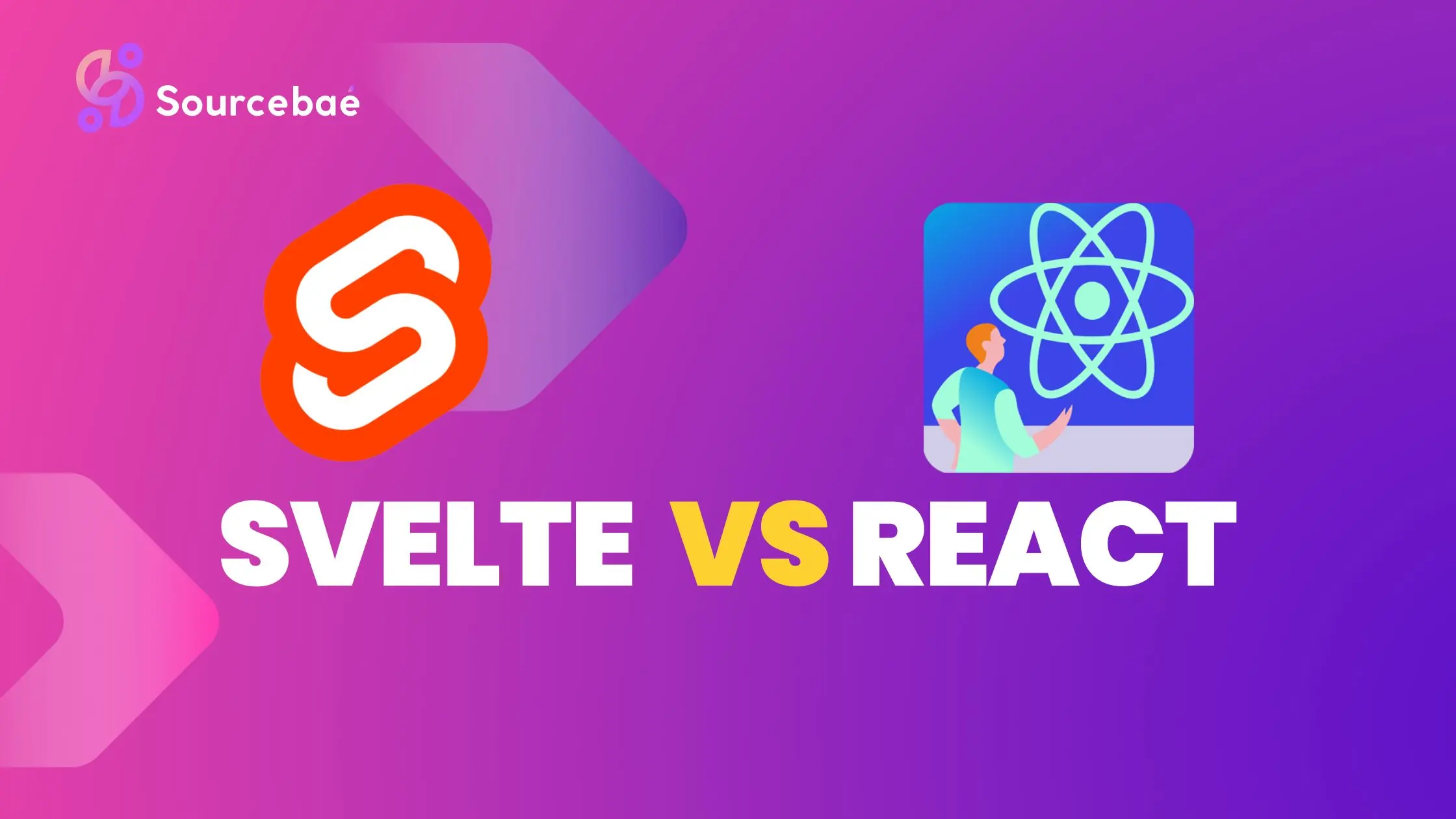In the rapidly evolving world of web development, choosing the right framework is crucial for creating efficient and performant applications. Two popular options that often come up in discussions are Svelte and React. Both frameworks have their own unique features and advantages, but understanding their differences is essential for making an informed decision. In this article, we will dive deep into the world of Svelte vs React, exploring their strengths, weaknesses, use cases, and more. So, let’s get started!
Svelte vs React: Exploring the Key Differences
When comparing Svelte and React, it’s important to understand their fundamental approaches to building web applications. Svelte is often referred to as a “compiler” while React is a “library.” Let’s take a closer look at each of them:
Svelte: A Compiler-Based Approach
Svelte takes a different approach compared to most JavaScript frameworks. Instead of running in the browser, Svelte compiles the application at build time into highly efficient JavaScript code that updates the DOM (Document Object Model) directly. This compilation step eliminates the need for a runtime framework and results in smaller bundle sizes and faster performance.
React: A Library-Based Approach
React, on the other hand, is a JavaScript library for building user interfaces. It operates at runtime, where components are rendered and updated in the browser. React utilizes a virtual DOM (a lightweight copy of the actual DOM) to optimize performance by minimizing actual DOM updates. This approach allows for greater flexibility and ease of integration with existing projects.
Comparing Performance and Size
Performance and bundle size are critical factors to consider when choosing a framework for your project. Let’s analyze how Svelte and React stack up in these areas:
Performance
Svelte’s compilation approach provides a significant performance advantage. By generating highly optimized JavaScript code during the build process, Svelte eliminates the need for runtime libraries, resulting in faster load times and snappy user experiences. Additionally, Svelte’s approach allows for efficient updates to the DOM, leading to smoother animations and transitions.
React’s virtual DOM approach, although optimized, still incurs a performance overhead compared to Svelte. While React has made significant performance improvements over the years, the extra layer of abstraction provided by the virtual DOM can impact performance, particularly in complex applications with a large number of components.
Bundle Size
When it comes to bundle size, Svelte shines as a lightweight framework. The compilation process eliminates the need for a runtime framework, resulting in smaller bundle sizes. This advantage becomes more prominent in larger applications where reducing the overall size is critical for faster load times. React, on the other hand, requires the inclusion of the React library, which adds to the bundle size.
Developer Experience and Learning Curve
A framework’s developer experience and learning curve are crucial aspects to consider, especially for teams working on web development projects. Let’s explore how Svelte and React compare in these areas:
Developer Experience
Svelte offers a delightful developer experience with its concise and intuitive syntax. It provides a clear separation of concerns and encourages best practices by minimizing boilerplate code. Svelte’s approach to reactive programming simplifies state management and ensures efficient updates to the DOM.
React also provides a solid developer experience, with a large and active community contributing to its ecosystem. React’s component-based architecture promotes code reusability, making it easier to build and maintain complex applications. However, React’s learning curve can be steeper compared to Svelte, particularly for developers new to JavaScript frameworks.
Learning Curve
Svelte’s simplicity and minimalistic nature contribute to its low learning curve. The framework’s straightforward concepts and syntax allow developers to get up and running quickly. Svelte’s documentation and official tutorials are well-documented and beginner-friendly, providing ample resources for learning and mastering the framework.
React, while powerful, has a steeper learning curve due to its more extensive ecosystem and concepts like JSX (JavaScript XML). Developers transitioning from traditional HTML and CSS may need some time to adapt to JSX and React’s component-based architecture. However, once developers grasp the core concepts, they can leverage React’s flexibility and powerful ecosystem to build robust applications.
Use Cases and Community Support
Understanding the ideal use cases for Svelte and React is vital for choosing the right framework for your project. Additionally, community support and availability of resources play a crucial role in the long-term success of a framework. Let’s explore these aspects:
Use Cases
Svelte’s performance advantage and small bundle size make it an excellent choice for applications that prioritize speed and efficiency, such as single-page applications, mobile web apps, or embedded interfaces. Svelte’s compilation step also makes it suitable for projects with limited resources or strict performance requirements.
React, with its vast ecosystem and strong community support, is an excellent choice for building large-scale applications with complex user interfaces. React’s component-based architecture and rich library ecosystem provide the flexibility needed to handle a wide range of use cases, from simple websites to enterprise-level applications.
Community Support
Both Svelte and React have active and thriving communities. React’s community is larger and more established, with a wide range of resources, libraries, and tools available. The extensive community support ensures that developers can find solutions to common challenges and easily seek help when needed.
Svelte’s community, while smaller, is growing rapidly, with an increasing number of developers embracing the framework. The official Svelte documentation and community forums provide valuable resources and support for developers starting their Svelte journey.
Frequently Asked Questions (FAQs)
Q: Which framework should I choose, Svelte or React?
A: The choice between Svelte and React depends on various factors, including your project requirements, performance goals, and your team’s familiarity with JavaScript frameworks. Svelte offers excellent performance and smaller bundle sizes, making it ideal for speed-focused projects. React, with its extensive ecosystem and community support, is well-suited for building complex applications with rich user interfaces.
Q: Can I migrate an existing React project to Svelte?
A: While it’s technically possible to migrate a React project to Svelte, it’s not a straightforward process. Svelte and React have fundamental differences in their approaches and APIs, which may require substantial refactoring. If you’re considering migration, thoroughly evaluate the complexity and size of your existing project to determine the feasibility and potential benefits of migrating to Svelte.
Q: Are there any notable companies using Svelte or React?
A: Yes, both Svelte and React are used by numerous companies worldwide. React has been adopted by industry giants such as Facebook, Instagram, Netflix, and Airbnb. Svelte, although newer, has gained traction and is being used by companies like Spotify, Square, and The New York Times.
Q: Is Svelte more suitable for small projects?
A: While Svelte’s small bundle size and performance benefits make it well-suited for small projects, it is not limited to them. Svelte’s simplicity and efficiency can be beneficial for projects of any size. It’s worth considering Svelte for larger projects as well, especially when performance and maintainability are important considerations.
Q: Can I use Svelte and React together?
A: Yes, it is possible to use Svelte and React together in the same project. This approach allows developers to leverage the strengths of both frameworks for different parts of an application. However, integrating the two frameworks requires careful planning and may introduce additional complexity to the project. It’s essential to evaluate the specific requirements and consider the trade-offs before adopting this approach.
Q: Which framework has better long-term support?
A: Both Svelte and React have active development communities and ongoing support. React’s larger community and industry adoption contribute to its long-term viability. Svelte, although newer, has gained significant traction and has a growing community. Ultimately, the long-term support for either framework depends on factors such as industry trends, community engagement, and the maintainers’ commitment.
Q: Is Svelte easier than React?
A: Both Svelte and React have their own learning curves. Svelte is often considered to have a lower learning curve due to its simplicity and intuitive syntax. It offers a concise approach to building components and managing state, making it easier for developers to get started quickly. React, on the other hand, has a more extensive ecosystem and concepts like JSX, which may require more time to learn and master. Ultimately, the perceived ease of learning depends on the developer’s familiarity with JavaScript frameworks and personal preferences.
Q: What are the disadvantages of Svelte?
A: While Svelte offers many advantages, it’s important to consider its disadvantages as well. Some potential drawbacks of Svelte include its relatively smaller community compared to React, which may result in fewer resources and libraries. Svelte’s evolving nature as a newer framework means that it may not have as many third-party integrations or extensive tooling options as React. Additionally, since Svelte relies on compilation, more complex build setups and configurations may be required compared to React’s more straightforward setup.
Q: Is it worth learning Svelte?
A: Learning Svelte can be highly valuable, depending on your specific needs and preferences. Svelte’s performance advantages, smaller bundle sizes, and simplified syntax make it an attractive choice for projects that prioritize speed, efficiency, and developer productivity. As Svelte gains traction and its community continues to grow, learning the framework can provide you with a competitive edge and open up new opportunities in web development. However, it’s essential to assess your project requirements and consider the existing ecosystem and community support before making a decision.
Q: Which is faster, Svelte or React?
A: Svelte’s compilation-based approach often leads to faster performance compared to React. The compiled output of Svelte is highly optimized JavaScript code that updates the DOM directly, eliminating the need for a runtime framework. This approach results in faster load times, smoother animations, and overall better performance. React, with its virtual DOM, also provides good performance optimizations but may have a slight performance overhead compared to Svelte. However, it’s important to note that the specific performance results can vary based on the complexity of the application and how it is implemented.
Q: Is Svelte the fastest?
A: While Svelte is known for its excellent performance, it’s important to clarify that “fastest” can have different interpretations. Svelte’s compilation-based approach allows it to generate highly optimized JavaScript code, resulting in faster load times and efficient updates to the DOM. However, when comparing frameworks, factors such as the size and complexity of the application, the specific use case, and the implementation details play a significant role in determining overall performance. While Svelte often excels in performance benchmarks, it’s essential to evaluate the specific requirements and context of your project before determining its suitability.
Conclusion
In the battle of Svelte vs React, there is no definitive winner. Both frameworks have their unique strengths and use cases. Svelte stands out with its compilation-based approach, resulting in excellent performance and smaller bundle sizes. React, with its vast ecosystem and community support, is well-suited for complex applications and offers more flexibility.
When choosing between Svelte and React, consider your project’s requirements, performance goals, and your team’s familiarity with JavaScript frameworks. Evaluate the trade-offs and determine which framework aligns best with your needs. Remember, there is no one-size-fits-all solution, and the ultimate decision should be based on careful consideration and thorough evaluation.






